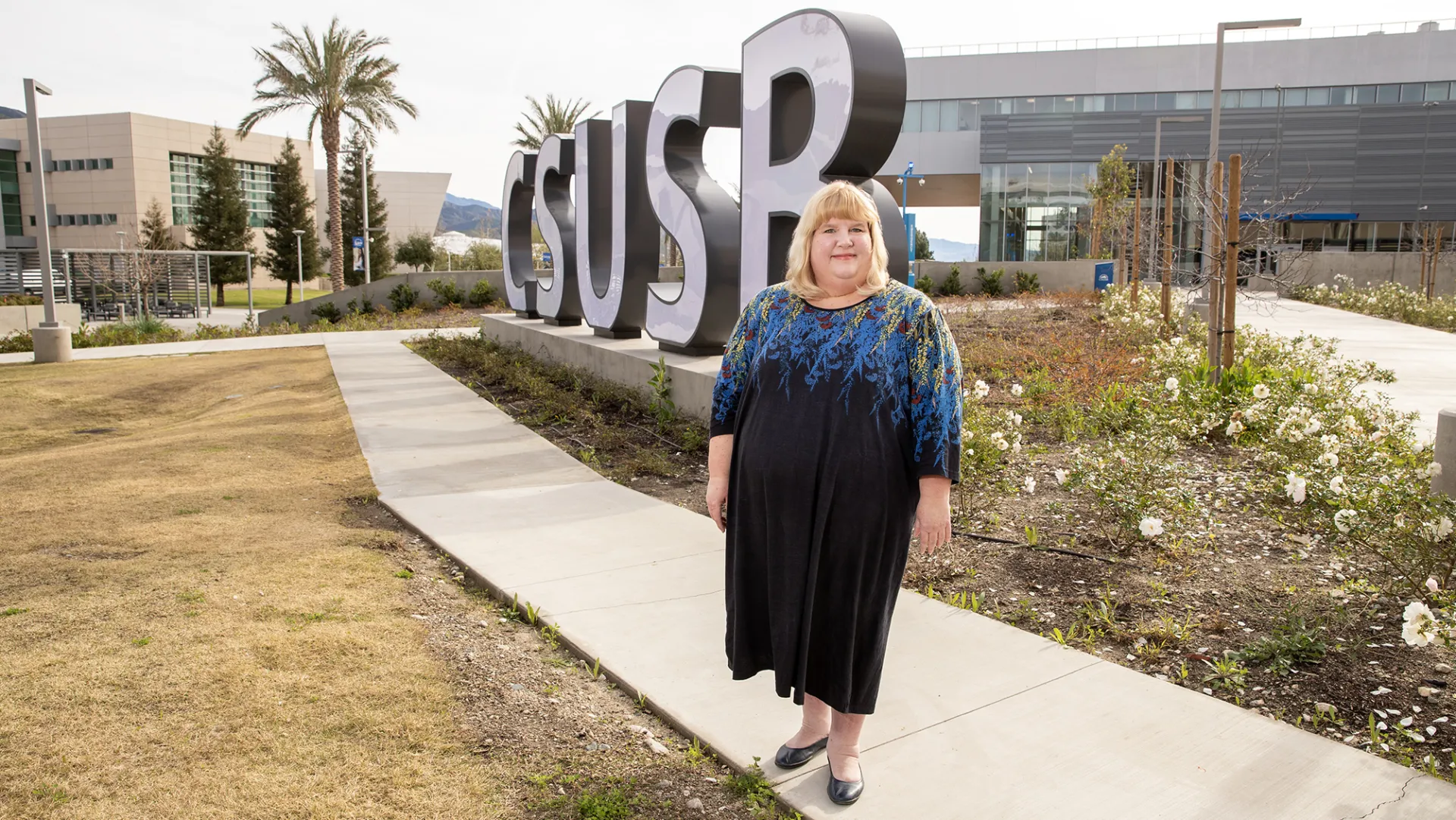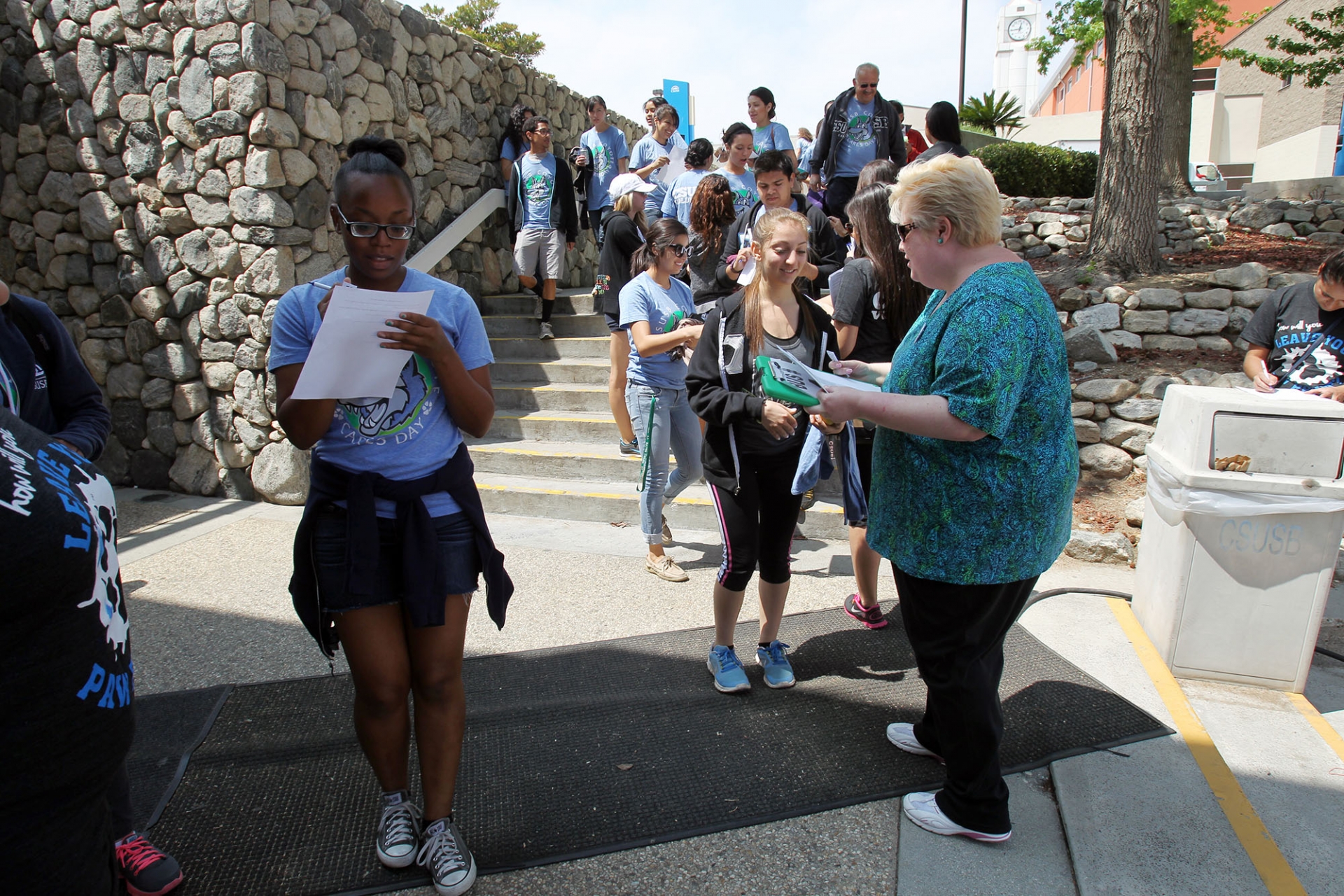Joe Gutierrez | Office of Strategic Communication | (909) 537-3007 | joeg@csusb.edu

Since 2015, CSUSB students, faculty and staff have completed nearly 480,000 volunteer hours in service to the community, with an estimated value of $14.2 million. That kind of commitment has earned the university prestigious recognition, as one of only 59 universities nationwide to hold both the Carnegie Classifications for R2 Doctoral Universities: High Research Activity and the Community Engagement classification.
Managing these efforts is the Office of Community Engagement under the direction of Diane Podolske, who joined CSUSB in 2002 as the director of service learning.
As the ninth annual Coyote Cares Day approaches Feb. 17 and 18, Podolske shares her thoughts on the importance of community engagement and the volunteer spirit that motivates the CSUSB campus and surrounding communities.
How do you define service learning in the context of higher education?
Service learning, in my own words, means including service in the community as a component of the learning process of a course or program. Community members contribute to the students’ educational experience, and the students intentionally reflect on their experiences and apply them to course content and their lives as community members.
Why is service learning important?
It’s important on so many levels. For students, it allows them to apply course theory into a real-world setting while also learning about their community, increasing their soft skills, and hopefully encouraging them to continue to volunteer and vote following graduation. Students also have an opportunity for professional networking and career exploration.
For university staff, serving in the community is a way to model to our students that engagement in local issues is a lifelong process. Many of our staff are also alumni, and service with other alumni and current students builds Coyote pride. It is also a way to provide services to the community in recognition of the community’s support of the university.
For university faculty, service learning experiences are typically very engaging for students, which makes classes enjoyable and provides students with an opportunity to see faculty outside of a classroom context. Students often report that service-learning classes are “the best classes I’ve taken at CSUSB” and this can be very motivating for faculty, while also helping to address community issues that they care about.

The Office of Community Engagement oversees numerous programs. What are the top programs in terms of activity and involvement?
The top five programs that come to mind, not necessarily in order, are:
- The OCE faculty grant program to support the integration of service in courses and research. In 2021-22, more than $102,000 in faculty grants were awarded.
- Faculty professional development on community engagement topics.
- Coyote Cares Day: a day of service that began in 2013 as a community clean-up in response to the city of San Bernardino’s bankruptcy. This year, we’re expanding the opportunity to volunteer to two days, Friday, Feb. 17 and/or Saturday, Feb. 18.
- The Obershaw DEN: the campus food pantry that OCE founded in January 2015. This program now resides in the Division of Student Affairs.
- Our recognition programs for CSUSB students, faculty and staff who volunteer, as well as our outstanding community partners.

Is there a program at CSUSB that you’re most proud of?
I’ll pick one faculty and one student program. The faculty grants program for the variety of disciplines and projects it has funded that still continue today. In terms of student programs, Coyote Cares Day, which has really become a signature event for the campus.
How has the field of community engagement grown and evolved over the years?
Community engagement programming has become a part of most higher education institutions nationally (and in some cases, internationally) including community colleges, graduate programs, medical school programs and more. Many students come to CSUSB and expect to do some type of service, just like they did in high school. Many of our incoming faculty have also had service experiences during their collegiate programs. Also, there has been important growth in community-engagement research.
Is there anything you’d like readers to know about community engagement that they may not be aware of?
While our office has great staff and we have played a small role in facilitating programs, the real recognition should be for the faculty, staff, students and community partners that are engaged in this work. It is their sustained hard work, sometimes through difficulties, that should be recognized and praised. This is important work that deals with difficult and complex issues, and the personal grit and loving kindness of both the campus and greater community to work together for change is really the story.